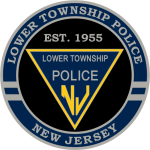To the Editor:
This month’s devastating pedestrian death on Fulling Mill Road brings into focus a perennial issue: What’s to be done about a road that is a serious risk to those with cars and deadly to pedestrians and cyclists?
I regularly use my bike to visit the Rio Grande shopping area and whenever I do, I face a distinct challenge. I live in Villas and would prefer to use the fastest route via Fulling Mill. Yet I know well the terror of risking a ride along the winding, narrow road.
Often, I end up cycling several miles out of my way to ride along the south side of the airport where the roads are just as busy and fast, but the shoulders are a bit wider.
This pedestrian death highlights a serious need in Lower and Middle townships: Fulling Mill needs a dedicated pedestrian and cycle lane or path. For many of us who live in Villas and do not own cars, doing our shopping in Rio Grande means waiting for the hourly bus to take us there, and then timing our store visits to sync up with bus schedules that return us to Villas.
At first glance, such a suggestion sounds unreasonable. Fulling Mill seems as though it is for cars alone. But by extending the pavement 8-10 feet on one or both shoulders, Lower and Middle townships and the county could save the additional lives that will inevitably be lost sooner or later.
The reality is that there are a handful of people who cycle on Fulling Mill to and from their place of work every day. Anyone who has a morning or evening driving commute that goes in that direction has probably seen them. The route can be made much safer and could even have prevented the recent death of Mark Bowers, the pedestrian who was killed by a driver.
Local governments should collaborate to build a wide enough shoulder and erect barriers that can be knocked over by a vehicle, known in planning parlance as “flexible delineators.” These white stick-like poles reach close to waist height and can be run over by cars in an emergency without causing damage to the vehicle.
Doing this would be good not only for safety but also for the local labor economy.
Some of the most affordable housing available in the county is in Villas and Rio Grande. Both places have a supply of year-round jobs. Expanding the transportation options available to residents in the Villas helps create economic opportunity. It can revitalize the anemic hiring prospects for business owners caused by the county’s housing shortage.
Mark Bowers was living in a storage unit along Fulling Mill, according to reporting by the Herald. The sad reality of his untimely death is that it could have been prevented. Often those who are vulnerable and struggle the most are left to inhabit places that most Cape May County residents would prefer to fly past at 50 miles per hour.
At a relatively low cost, local governments could connect Rio Grande and the Villas to prevent the next tragedy, enhance liveability and expand economic opportunity. Lower’s Mayor Frank Sippel, Middle’s Mayor Tim Donohue and County Commissioner Director Leonard Desiderio can take action. When local leaders can save the lives of their constituents and better their community, they should seize the opportunity.








